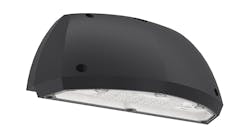There’s been a common refrain over the last year that pandemic-induced work-from-home routines will become the new normal. But a somewhat different tune has started to play recently, sounding the return to the office.
In case you’ve been on a spring break and missed it, over the last seven days alone, companies including technology giants Google and Amazon and financial groups such as Goldman Sachs and Wells Fargo have to one degree or another touted the office as the place to be soon. According to a tally by Forbes, there was an announcement along those lines each day last week by one major company or another.
“We believe most of us benefit by being physically together,” Wells Fargo CEO and chief operating officer Charles Scharf and Scott Powell said in a joint memo to employees, according to the Wall Street Journal. “Being pulled into meetings, learning from seeing how others work, and the often unplanned, casual interactions that occur when people see each other in the workplace can be really important.”
To be clear, the general mood is not dismissing the idea of home working. Far from it. But, much more than last spring and summer, employers are making it clear that a combination of office and remote working could well be the way forward once the health crisis eases.
Perhaps that has been their intention all along, and the notion of work-from-home permanency was just a knee-jerk illusion fostered all these months by popular thinking and the media.
Whether it has been real or imaginary, the perception of tumbleweed offices has caused some long-term concern among lighting companies about the future of the office lighting business. They’ve certainly had to cope with at least a short-term slowdown.
The CEO of the world’s largest lighting company, Signify, acknowledged uncertainties more than once over the last 12 months.
“We don’t know yet exactly what the trend is going to be,” Signify boss Eric Rondolat acknowledged to LEDs Magazine back in September, for instance. “But there are strong signs at this point in time that there may be less investment from promoters and investment companies in general in office spaces. For us, this means less new business.”
Rondolat also noted at the time, though, that the hiatus marked an opportunity to educate the market on the benefits and role of lighting in the Internet of Things (IoT), in which the lighting infrastructure is outfitted with chips and sensors and helps businesses improve operations of all sorts. Smart lights and the data they collect, when combined with data analysis, can detect when space is being underutilized; they can track physical assets; they can help guide people around cavernous buildings when combined with smartphone maps; they can offer personalized deals to customers in retail stores.
Not to be underestimated as the world adopts a hybrid home/office work approach, smart lights can alert employees to available spaces in “hot desk” schemes.
Another lighting industry opportunity, as offices begin to open their doors again, will be in disinfection — the sale of ultraviolet emitters to zap pathogens including but not limited to the coronavirus. As the public returns to work, it will do so with a heightened awareness of hygiene.
None of this is to say that this new song will crescendo into a loud harmony of sales and earnings derived from smart lighting technologies.
Before COVID-19 hit, the industry was making only slow progress at spreading the IoT word. Vendors will pick up where they left off.
Possibly working in their favor is that a general “reset” economic mentality could convince formerly hesitant buyers that now’s the time. And there could be a more pressing, genuine need for technology that makes workplaces safer, healthier, and happier places to be.
Having said that, one of the big challenges the lighting industry will continue to face is that as they try to morph into information technology companies, they will compete against, whadya know, info tech companies.
Case in point: No physical-world commercial enterprise represents the “future” more than Amazon’s nearly 30 “Just Walk Out” stores, the latest two of which opened recently in London. In these cathedrals of modern consumerism, shoppers walk in, fill their baskets with goods, and walk out, never stopping to pay either a cashier or an automated machine. It’s all done through marvels of chips, sensors, cameras, artificial intelligence, and the like, plus a credit card.
Some of the technology is mounted overhead at ceiling level. But in the lights? LEDs is guessing no, but we don’t know for certain. We’ve asked Amazon, a company known for being tight-lipped about the nuts and bolts of the system. We await the mega-retailer’s reply.
Meanwhile, if you’re driving to work soon, don’t forget to leave a little early. Then again, leave at a more normal hour and you might get to enjoy a nice bit of nostalgia — the traffic jam.
MARK HALPER is a contributing editor for LEDs Magazine, and an energy, technology, and business journalist ([email protected]m).
For up-to-the-minute LED and SSL updates, why not follow us on Twitter? You’ll find curated content and commentary, as well as information on industry events, webcasts, and surveys on our LinkedIn Company Page and our Facebook page.






